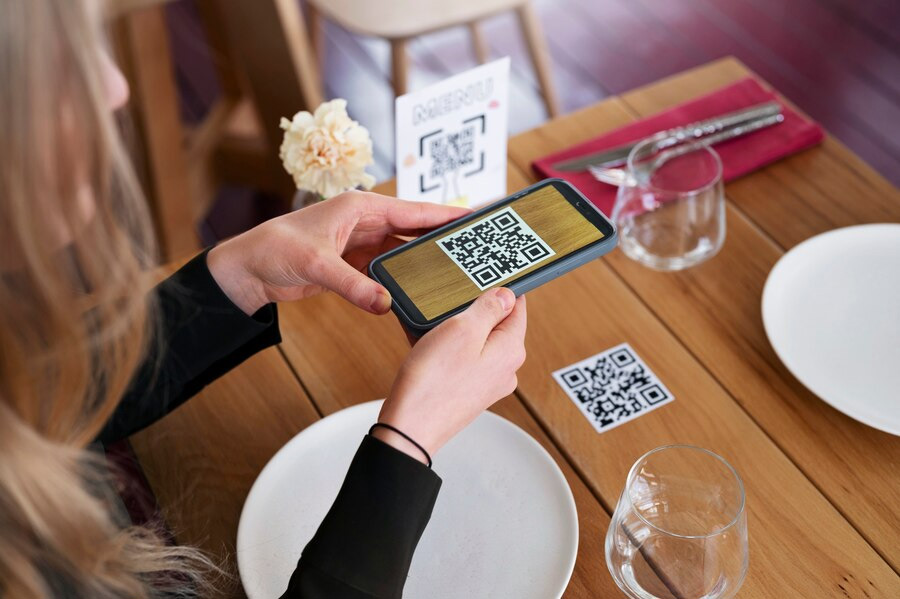An Inside Look at Points, Perks, and Profit

In today’s highly competitive business landscape, finding ways to attract new customers while retaining loyal patrons is crucial for success. This is where loyalty reward programs have proven to be invaluable for many companies, big and small. But how do loyalty cards work exactly?
In this article, we’ll explore all types of loyalty card programs, loyalty or rewards cards, and how does loyalty card work for both businesses and customers.
What Is a Loyalty Card?
Loyalty cards are issued in loyalty programs as a way for customers to earn points and rewards from a business for their continued loyalty and repeat purchases.
Customer loyalty cards are a highly effective customer retention strategy employed by businesses to not only encourage brand loyalty but also to increase referrals and attract new customers.
How does loyalty card work in a business? The card incentivizes customers to make repeat purchases in order to earn points and rewards. This helps businesses develop customer loyalty, leading to higher retention and revenue as customers are motivated to keep spending to enjoy the program benefits.
How does loyalty card work in marketing? The card is a strategy to attract and retain loyal customers by providing rewards, discounts, or other incentives. It also provides customer data which helps optimize marketing efforts. Most loyal customers also refer friends and family, providing free word-of-mouth advertising.
How does loyalty card work as a system? A customer receives a card upon enrollment in a business’s loyalty program. For each purchase made, points are added to their account based on how much they spend. The accumulated points can then be redeemed for rewards.
Loyalty cards allow businesses to track customer data and shopping habits while incentivizing repeat business.
How Does Loyalty Card Work?
Loyalty cards work by providing customers with rewards and incentives to continue purchasing. Though discounts are offered, the business still makes more profit over time through increased customer lifetime value.

So, how does loyalty card work to make money for businesses?
Loyalty programs encourage customers to make repeat purchases in order to earn rewards or other incentives. Even if the business offers discounts or free items through the program, the goal is to increase customer lifetime value—i.e., how much each customer spends with the business over time.
By encouraging repeat business, loyalty cards aim to get customers to make more purchases and spend more money overall than they would without the incentives. This increased retention and spending make up for it and can significantly boost revenue over the long run for the business.
Did you know?
- According to Harvard Business Review, a 5% increase in customer retention rates increases profits by 25%-95%.
- 75% of consumers say they will buy more products from a brand that offers a loyalty program.
- Acquiring a new customer is 5-25x more expensive than retaining an existing one.
Loyalty card programs create a win-win for both customers and businesses. Customers get rewards and perks for their loyalty, and businesses gain increased profitability.
Types of Loyalty Cards and How They Work
Loyalty card programs come in different forms, each with its own process for rewarding customer loyalty.
There are two main types of loyalty cards: punch cards and loyalty cards. How does loyalty card work in each case? Let’s find out with a step-by-step overview.
Punch Cards
A punch card rewards program provides customers with a cardboard card that gets a hole punched after each purchase. Once their loyalty punch card is fully punched, customers can exchange it for a reward.
Paper punch cards or stamp cards are the vintage paper-based predecessors to modern loyalty cards. How does loyalty card work:
- The customer receives a cardboard card that displays a grid of blank circles.
- Each time they buy a product or service, the staff will stamp or punch a hole in one of the circles with a hole puncher.
- After all the circles get stamped or punched out, the customer can redeem the fully filled card to claim a reward.
- Once a reward is redeemed, the customer can get a new loyalty punch card and start over again.
Loyalty Cards
A loyalty card is typically a plastic card offered to its customers by a business. The card is scanned at checkout, and the customer earns points and rewards on their purchases.
Plastic loyalty cards are the more modern iteration that electronically tracks the customer activity in the rewards program. How does loyalty card work:
- The customer receives a loyalty card containing a magnetic stripe, chip, or barcode with a unique loyalty card ID number assigned to it, upon enrollment into the program.
- Each time they make a purchase, the customer presents their card which is then swiped or scanned by the staff at checkout.
- The customer receives points based on how much they spent.
- Once enough points are accumulated, the customer can redeem them for a discount.
How Loyalty Cards Can Help Your Business
Reward programs and loyalty cards were devised for a good reason—they provide concrete benefits for businesses using them. How does loyalty card work to make a business successful?
Let’s dive into the multitude of advantages loyalty card programs can bring:
- Increased customer retention. By providing incentives to return, loyalty cards encourage repeat business. Customers remain engaged with your brand. Loyalty card programs boost retention by rewarding repeat visits and purchases, keeping customers invested in your brand over competitors.
- Higher revenue and profits. Rewards motivate customers to make more frequent purchases and spend more. Enticing rewards drives upselling opportunities and leads customers to actively increase purchases in order to earn points, increasing revenue for the business.
- More customer insights. Loyalty cards provide data on purchasing habits which is useful for marketing. The detailed transaction data collected from loyalty members allows for customer segmentation and targeted marketing campaigns.
- Stronger brand advocates. Loyal customers are more likely to recommend your brand and rewards program to others. They serve as brand ambassadors, promoting your brand through word-of-mouth.
Disadvantages of Loyalty Cards
While paper and plastic loyalty cards have been a staple of customer loyalty programs for years, they come with some downsides:

- Physical loyalty cards are easily lost or damaged. It’s very easy for customers to lose or misplace their cards. When this occurs, they lose access to all of the progress they had earned up to that point.
- Physical cards are inconvenient for customers. Since customers have to carry and present their physical cards in order to earn points and rewards, it’s an inconvenience if they forget them at home. This may discourage customers from actively participating in the loyalty program.
- Lengthy enrollment process. The enrollment process often requires filling out long forms with personal information, and then waiting for approval and receipt of the physical card in the mail. This cumbersome process can deter customers from enrolling in the first place.
- Producing them can be expensive. Producing physical loyalty cards requires paying for materials like paper or plastic, printing costs, design work for the artwork and graphics, and more. With hundreds or thousands of cards, these production costs add up quickly.
Physical loyalty cards are now mostly outdated as technology evolves and consumers seek digital alternatives that provide far greater convenience. How does loyalty card work in digital format? Read on.
Go Card-free with Digital Loyalty Cards
With smartphones becoming ubiquitous, loyalty cards accessed via mobile devices are rapidly gaining popularity over physical cards.
What is a digital loyalty card?
Digital loyalty cards are digital versions of traditional plastic loyalty cards stored on the customer’s smartphone, rather than having to carry around a physical card.
Did you know?
- According to a study, only 18% of loyalty customers remained active in plastic card-based reward programs after 3 months as opposed to 83% in mobile-based loyalty programs.

How does loyalty card work in digital format?
The loyalty card allows customers to engage with a business’s rewards program by earning points and redeeming rewards entirely through their mobile devices. Most loyalty card program providers often require customers to download and install an app on their phones.
These loyalty cards offer key advantages compared to traditional physical cards:
- Digital loyalty cards are convenient. The card is accessible from the customer’s smartphone so they don’t have to remember to bring a physical card with them.
- Easy to track points and rewards. The card allows the customer to easily track their loyalty points and rewards progress anytime through the loyalty program app on their mobile device.
- Can’t get lost or damaged. Since the card is in digital format, the customer can’t lose it or have it stolen like a physical card.
- Quick sign-up process. The customer can easily sign up and get enrolled in the loyalty card program app immediately without having to endure long waiting times.
- Preferred by the majority. Most Americans, in fact, 79% of them say they are more likely to participate in a loyalty program that doesn’t require them to carry a physical loyalty card.
Get Ahead with QR Code Loyalty Cards
While digital loyalty cards have seen a rise in recent years, QR code loyalty cards are an innovative approach bringing the convenience of digital cards to a new level.
What is a QR code loyalty card?
This loyalty card allows customers to effortlessly enroll and participate in a business’s rewards program by simply scanning a QR code with their smartphones. What’s more?
With RewardPocket, for instance, there is no need to download any app or install any software. As a business owner, you can provide your customers with a card-free, app-free (and hassle-free) loyalty experience.

How does loyalty card work with QR code integration?
The loyalty card provides customers with a smooth, engaging mobile loyalty experience while removing barriers to enrollment and participation in the program.
For businesses, how does loyalty card work with QR codes:
- You have access to an intuitive dashboard platform where you can design and manage your loyalty program features, rules, and rewards structure. (No software installation or coding skills required.)
- A unique QR code is generated that your customers can scan to sign up for the program.
- You can display this QR code in your store, on printed materials, and across all marketing channels both online and offline.
- Your dashboard also has a section dedicated to analytics where you can monitor and analyze performance.
For customers, how does loyalty card work with QR codes:
- The customer simply scans the QR code with their smartphone to enroll in the program. (No app download required.)
- They have their own dashboard where they can track their points, browse the rewards catalog, and more.
- To earn points on a purchase, the customer scans the store’s QR code displayed at checkout.
- Once enough points are accumulated, the customer redeems their reward with a quick QR code scan.
QR code loyalty cards provide a frictionless way for businesses to engage customers and drive loyalty.
Did you know?
- According to a survey, 70% of consumers say they would use a mobile loyalty card if they didn’t have to download an app.
Give your customers what they crave — a seamless, innovative loyalty experience that keeps them coming back to your business! Get started with our 7-day trial free.
Key Takeaways
- How does loyalty card work: Loyalty cards encourage repeat business by rewarding customers for their continued patronage through a business’s loyalty program. This increases customer lifetime value.
- Benefits of loyalty cards for businesses include higher customer retention, increased revenue, and brand advocacy through word-of-mouth.
- Digital loyalty cards accessed via smartphone apps provide greater convenience and engagement than physical cards.
- Innovative options like QR code loyalty cards creatively engage customers while removing barriers to enrollment and participation.
- With RewardPocket, businesses can take it a step further by offering an app-free way for customers to enroll and participate just by scanning a QR code with their smartphones.
Conclusion
Loyalty card programs are an invaluable tool for customer retention and continued business success.
While traditional paper punch cards and plastic loyalty cards paved the way, modern digital formats now allow for more convenient and seamless loyalty experiences.
By implementing innovative solutions like QR code-based mobile loyalty programs, businesses can increase engagement, develop brand loyalty, and continue driving growth successfully into the future.
Frequently Asked Questions (FAQs) about How Does Loyalty Card Work
What is the meaning of a loyalty card and how does it work?
A loyalty card is a card issued by retailers to customers to track rewards points earned for purchases made at their stores. For every dollar spent, shoppers accumulate points that can be redeemed for perks to incentivize repeat business. The cards allow brands to improve customer lifetime value and boost revenue.
What is the main purpose of a loyalty card?
Loyalty card programs aim to retain loyal customers and incentivize repeat purchases by offering exclusive rewards, discounts, and other members-only perks. The rewards entice customers to continue doing business with that store rather than one-time shopping.
How do loyalty card programs make money?
The combination of increased customer spending and larger transactions incentivized by loyalty card programs results in higher revenue and profit for businesses. Customers enrolled in programs spend more money on average than non-members in order to earn rewards and perks.
What is another name for a loyalty card?
Other common names for a loyalty card include rewards card, membership card, points card, club card, advantage card, frequent shopper card, and customer card. Whatever the name, the purpose is the same—to build brand loyalty by offering incentives for frequent shopping.
Why do people like loyalty cards?
People like loyalty cards for the discounts and other exclusive perks they provide. Loyalty cards make customers feel valued and give them an incentive to continue purchasing from a brand. The rewards give shoppers a sense they are getting a deal. Loyalty cards also give people a sense of membership in a special club.


